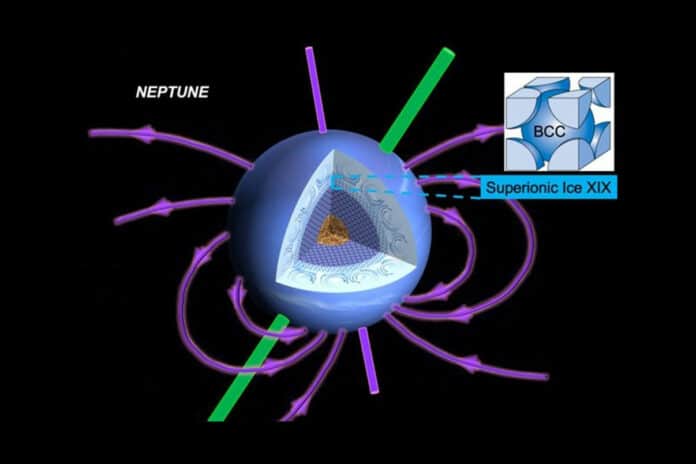Uranus and Neptune are water-rich gas giants. These giant planets have extreme pressures of 2 million times the Earth’s atmosphere. Additionally, the inside of these planets are as hot as the Sun’s surface. In these circumstances, water exhibits unusual, high-density ice phases.
Using high-power lasers to reproduce the necessary extreme conditions, scientists recently observed one of these phases, called Ice XIX. This study provides evidence for the Ice XIX phase, which was previously unknown. It demonstrates that this phase might form at the proper depths and aids in deriving the magnetic Voyager II data.
The complicated magnetic fields of these planets are thought to be generated by superionic high-pressure states of unusual water ice. However, it is challenging to measure ice structure under these extreme circumstances.
Scientists used the Matter at Extreme Conditions instrument at the Linac Coherent Light Source, an ultrafast X-ray Free Electron Laser, and a Department of Energy (DOE) Office of Science user facility to probe the ice structure during laser-driven dynamic compression.
The body-centered cubic (BCC) lattice structure of this novel high-pressure ice phase, known as Ice XIX, appears at 200 GPa (2 million atmospheres) and 5,000 K (8,500 degrees Fahrenheit). The BCC structure of Ice XIX would allow for an increase in electrical conductivity considerably further into the interiors of ice giants than was previously thought, even if other arrangements have been suggested to be stable under these circumstances.
Scientists noted, “The results provide an important and compelling origin of the multi-polar magnetic fields as measured by the Voyager II spacecraft for Uranus and Neptune.”
Journal Reference:
- Gleason, A., et al., Dynamic compression of water to conditions in ice giant interiors. Scientific Reports 12, 715 (2022). DOI: 10.1038/s41598-021-04687-6
